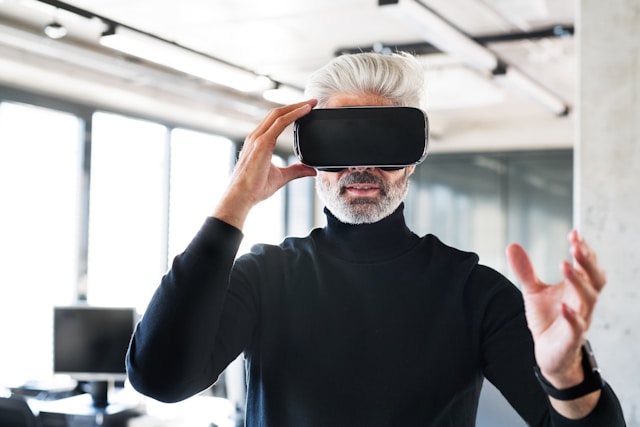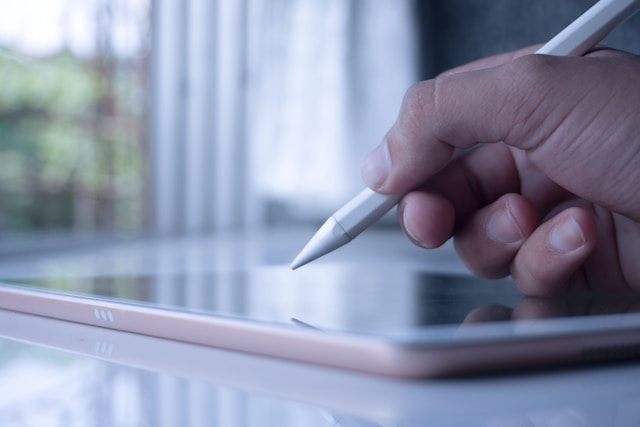
Table of Contents
Toggle1. The Evolution of Wearable Technology in Fashion
Overview: Wearable technology has come a long way from early iterations like bulky fitness trackers to sleek, fashionable tech accessories. Today’s wearables combine advanced functionality with sophisticated design, catering to both tech enthusiasts and fashion-conscious individuals.
Historical Context:
- Early Innovations: Early wearables focused on fitness tracking and basic notifications. Devices like the Fitbit and early smartwatches laid the groundwork for more advanced tech-infused fashion.
- Modern Developments: Recent innovations include smart clothing, augmented reality (AR) glasses, and advanced smartwatches that integrate seamlessly with high fashion.
Impact on Fashion:
- Integration of Tech and Style: Wearables are now designed to complement fashion trends, with brands like Apple, Samsung, and Google collaborating with high-fashion designers to create aesthetically pleasing tech products.
- Functionality Meets Fashion: Modern wearables offer features like health monitoring, navigation, and communication while maintaining stylish designs that fit into various fashion genres.
2. Smartwatches and Tech-Infused Accessories
Overview: Smartwatches and tech-infused accessories have become essential elements of contemporary fashion, providing both functionality and style.
Key Innovations:
- Smartwatches: Brands like Apple, Garmin, and Fossil have integrated health tracking, notifications, and apps into sleek watch designs that appeal to fashion-forward consumers.
- Tech-Infused Jewelry: Wearable tech jewelry, such as smart rings and bracelets, combines aesthetic appeal with technology. Products like the Oura Ring and the Motiv Ring offer health tracking in a stylish form factor.
- Smart Glasses: Companies like Ray-Ban and Facebook have introduced smart glasses that combine eyewear with technology, allowing users to listen to music, take calls, and capture photos discreetly.
Impact: These innovations enhance daily life by providing convenient access to technology while complementing personal style. They represent a growing trend of integrating practical tech into fashionable accessories.
3. Smart Clothing: The Future of Fashion
Overview: Smart clothing represents the frontier of wearable technology, blending textiles with electronics to create garments that offer both style and functionality.
Key Innovations:
- Smart Fabrics: Brands like Under Armour and Nike are developing smart fabrics that monitor biometrics, regulate temperature, and provide performance-enhancing features. Examples include moisture-wicking fabrics and heated jackets.
- Interactive Clothing: Designers are experimenting with clothing that incorporates LED displays, touch-sensitive fabrics, and programmable elements. These garments can change color, display messages, or interact with the wearer’s environment.
- Fashion Tech Collaborations: Collaborations between tech companies and fashion designers are pushing the boundaries of smart clothing, resulting in innovative products that marry form and function.
Impact: Smart clothing offers personalized experiences and performance enhancements while maintaining style and comfort. It represents a significant shift towards fashion that is not only visually appealing but also technologically advanced.
4. The Role of Augmented Reality (AR) in Fashion
Overview: Augmented Reality (AR) is transforming the fashion industry by offering immersive and interactive experiences that bridge the gap between virtual and physical worlds.
Key Innovations:
- Virtual Try-Ons: AR technology allows users to virtually try on clothing and accessories through apps and in-store displays. Brands like Zara and ASOS use AR to enhance the online shopping experience by letting customers see how items fit and look.
- AR Fashion Shows: Designers and brands are using AR to create virtual fashion shows and interactive experiences, providing a new way for consumers to engage with collections and styles.
- Interactive Retail Experiences: AR is being used in retail environments to create engaging and interactive experiences, such as virtual fitting rooms and product visualizations.
Impact: AR enhances the shopping experience by providing a more immersive and personalized way to explore fashion. It allows consumers to make more informed purchasing decisions and engage with brands in innovative ways.
5. The Future of Wearable Tech in Fashion
Overview: The future of wearable technology in fashion promises even greater integration of tech and style, with ongoing advancements in design and functionality.
Emerging Trends:
- AI-Powered Fashion: AI is being used to create personalized fashion recommendations, design custom garments, and optimize fashion retail operations.
- Sustainable Tech: The focus on sustainability is leading to the development of eco-friendly smart clothing and accessories, incorporating recycled materials and ethical production practices.
- Enhanced Connectivity: Future wearables may offer even more seamless connectivity with other devices and systems, creating a fully integrated tech and fashion ecosystem.
Impact: The continued evolution of wearable technology will further blur the lines between fashion and tech, offering consumers more sophisticated, stylish, and functional products. As technology advances, the possibilities for innovative fashion solutions will expand, leading to new trends and experiences in the world of wearable tech.
Conclusion
Wearable technology is profoundly shaping the future of fashion, blending cutting-edge tech with modern style to create innovative products that enhance both functionality and aesthetics. From smartwatches and tech-infused accessories to smart clothing and AR experiences, the intersection of tech and fashion is redefining contemporary style. As technology continues to advance, the fusion of fashion and tech promises even more exciting possibilities, offering consumers a new realm of stylish and functional wearables.






